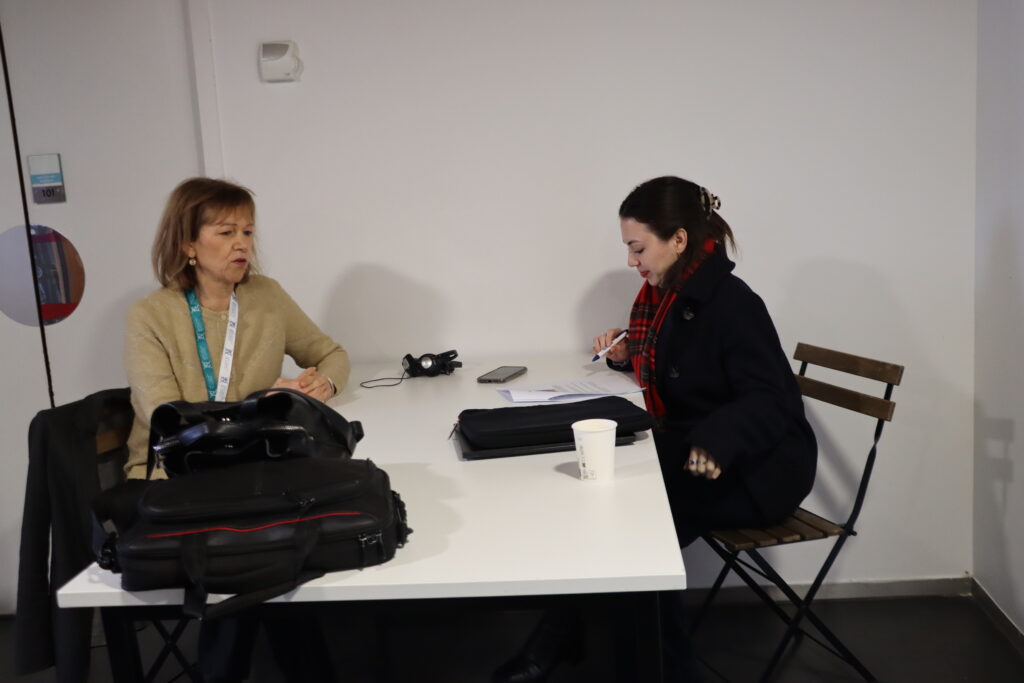
During the seminar “Environmental Transitions and Territories,” organized by the National Agency for Territorial Cohesion and the ESPON program, Dominique Consille, director of the Action Cœur de Ville program, shared her expertise on transforming medium-sized urban centers. Through an approach aimed at reducing land artificialization, promoting soft mobility, and revitalizing central areas, her intervention highlighted the link between local urban revitalization strategies and the objectives of the European Green Deal.
Understanding Key Concepts
Land Artificialization: This phenomenon refers to the transformation of natural, agricultural, or forest areas into urbanized zones, often at the expense of biodiversity and natural resources. The European Union aims to reduce this artificialization within the framework of the Green Deal and long-term zero net land take (ZNLT) goals. In France, the “Climate and Resilience” law of August 22, 2021, set a zero net land take target for 2050. The law of July 20, 2023, aims to facilitate its implementation, particularly by local elected officials.
Decarbonized Mobility: This refers to developing modes of transport that reduce greenhouse gas emissions, such as public transport, cycling, and walking, to limit dependence on private cars.
Urban Centrality: A key concept in urban planning, it focuses on strengthening city centers by concentrating businesses, housing, and services there to limit urban sprawl and promote a more sustainable lifestyle.
The European Green Deal: A set of measures implemented by the European Union to achieve carbon neutrality by 2050, including waste reduction goals, recycling promotion, and the revival of green industry in Europe.
Medium-Sized Cities and Environmental Challenges
For decades, territorial planning in France favored urban expansion in the form of suburban housing, commercial, and industrial zones on city outskirts. This trend led to the desertification of city centers, excessive consumption of agricultural land, and increased car dependence.
Launched in 2018, the Action Cœur de Ville (ACV) program was designed to reverse this dynamic. Dominique Consille, director of the program at the ANCT, explains that the main objective is to restore the attractiveness of medium-sized city centers by focusing on housing, the local economy, mobility, and heritage.
“Even though it was not explicitly presented this way at the time, Action Cœur de Ville aligns with European policies: preserving agricultural land, limiting land artificialization, and promoting soft mobility while strengthening centralities.”
By reinforcing urban centralities, the program directly contributes to the commitments of the European Green Deal, which seeks to curb urban sprawl and promote sustainable transport alternatives.
The Challenge of European Funding: An Indirect but Complementary Approach
Although European funds were not specifically integrated into ACV’s initial budget, many projects benefit from these funds.
“Municipalities define their own projects and then seek the necessary funding from various partners. This allows for flexibility and local adaptation but also means that European funds are not always visible in the program’s overall financing.”
To date, €10 billion has been mobilized for ACV through the State, the Banque des Territoires, ANAH, and Action Logement. European funds are often used at the initiative of cities when they apply for subsidies for specific projects aligned with program objectives. However, access to these funds requires a clear framework from the project’s inception, making national-level forecasting difficult.
European Collaboration and the Sharing of Best Practices
France’s experience in city center revitalization is far from isolated. ACV is part of a broader European dynamic of urban planning policy exchanges.
A concrete example of cross-border cooperation involves Longwy in Moselle, which collaborates with Luxembourg to redevelop the area around the train station and improve cross-border commuting.
Moreover, initiatives such as the European City Centers Observatory, led by the association Centre-Ville en Mouvement, allow local stakeholders to compare their strategies and draw inspiration from best practices implemented in other European countries.
“I participated in a European conference in Strasbourg, where representatives from various countries discussed their approaches to revitalizing medium-sized cities. These discussions are essential for aligning our strategies and integrating innovative ideas adapted to each territory.”
The Role of Data in Sustainable Urban Planning
Using reliable data is crucial for guiding local government decisions and ensuring that implemented actions are effective.
The Observatoire des Territoires produces valuable analyses to demonstrate the importance of strengthening centralities and helps tailor policies to local realities. This data is made available to local governments for precise diagnostics before launching projects.
“We also collaborate with Cerema, which supports Action Cœur de Ville cities on four priority themes: ecological transition, urban nature, land sobriety, and decarbonized mobility. These areas are directly linked to European priorities.”
These tools help assess progress and direct future investments toward sustainable solutions.
Alignment with European Objectives
The Action Cœur de Ville and Petites Villes de Demain programs are fully aligned with the European Union’s environmental and territorial strategies. By limiting land artificialization and promoting sustainable mobility alternatives, these initiatives contribute to the ambitions of the European Green Deal and European efforts for more resilient territories.
Cross-border cooperation and knowledge-sharing at the European level play a crucial role in strengthening these actions and fostering innovation in urban revitalization policies.
“Medium-sized cities have a central role to play in the ecological transition and territorial adaptation. It is essential for local stakeholders to embrace these challenges and utilize the tools available to rethink the city of tomorrow.”
The future of urban revitalization therefore relies on a combination of locally adapted strategies, targeted funding, and strengthened European collaborations.
More Information
